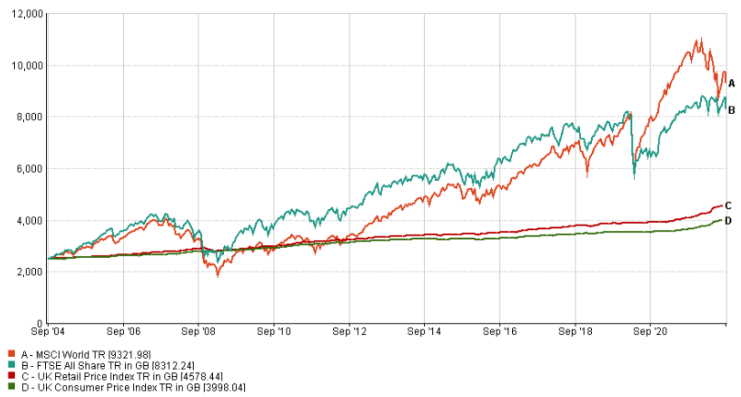University fund – why using a Junior ISA may (and may not) be a clever strategy
September is the month when universities across Britain typically start their academic year. This may mean that your child or grandchild is returning to campus to continue their studies or may be starting their new life as a university student.
While this is a time of immense pride for many parents and grandparents, it can also bring worries such as student loans and university costs. If you’re affected by these concerns, you may want to read our guide on paying for university and student loans, which provides useful information that could help give you peace of mind.
As a parent or grandparent, you may also have younger children or grandchildren who you want to support financially through university. This is something the team at HarperLees Financial Planning helps many clients with, and as such, may have already discussed your options with you.
If you haven’t discussed this with us yet or know someone who would like to set up a “university fund”, one option could be to set up a tax-efficient Junior ISA (JISA). While this may be a shrewd strategy, opting for a Cash JISA could result in the fund losing significant value in real terms.
Discover why, and how you could help preserve a university fund’s real-term value.
A JISA is a tax-efficient way to put money aside for a child
JISAs were launched in 2011 to replace Child Trust Funds, and allow UK residents who are parents or grandparents to build a pot of money for a child. In 2022/23 you can place a total of £9,000 into JISAs, meaning the child could have a significant pot of money when they reach the age of 18 to help fund university.
Any growth made by the JISA, or money taken from it, is typically free of Capital Gains Tax (CGT) or Income Tax. One thing you may want to consider is that when the child reaches the age of 18 the JISA automatically becomes an adult ISA, and legally becomes theirs.
There are two different types of JISAs: Cash, and Stocks and Shares. While in today’s volatile economic climate you might be considering a Cash JISA to reduce risk, in the long term this could result in your money’s value shrinking in real terms.
As a result the child could effectively receive less money, something we will look at now.
Inflation means a Cash JISA could shrink in real term value over time
As inflation is the rising cost of living over time, £1 today is likely to purchase more than it will in the future. If you use an inflation calculator, you will see that you would need £184 in September 2022 to have the same spending power as 18 years ago in September 2004.
In other words, your money needed to increase in value by 84% during the period to keep pace with inflation, which averaged 3.5%. This is significantly below the 9.9% inflation rate that was announced by the Office for National Statistics for August 2022.
Furthermore, Moneyfacts reveals that the top best Cash JISA offered 2.85% (13 September 2022). When you consider this is significantly below the rate of inflation, you can see how the money put aside could lose value in real terms.
Let’s now look at how you may be able to expose the money you put aside to greater growth potential.
A Stocks and Shares JISA could help inflation-proof the money
As the stock market has typically provided greater growth potential than cash savings over the long-term, putting the money into a Stocks and Shares JISA could be a better option. This is highlighted in the following illustration, which shows the performance of the MSCI World index and FTSE All Share between September 2004 and September 2022.
The MSCI World index tracks the performance of a basket of companies from 23 developed nations, while the FTSE All Share follows 600 companies listed on the London Stock Exchange. The illustration assumes £2,500 was invested into both indexes in September 2004.

Source: FE Analytics
As you can see from the values on the left-hand axis, overall, both indexes increased significantly during the period despite several downturns along the way. Furthermore, both would have helped inflation-proof your money for most of the 18-year period.
The illustration also suggests that investing into a Stocks and Shares JISA may not only inflation-proof the money you put into a university fund, but it could also boost the amount the child receives. This could provide more money for their education.
Always remember though, previous performance is not a guarantee of future performance, and you may get back less than you invested.
Get in touch
If you, a friend or a family member are thinking about building a university fund for a child and would like to discuss a Stocks and Shares JISA or other options, please contact us. We can be reached on info@harperlees.co.uk or by calling 01277 350560.
Please note
This article is for information only. Please do not act based on anything you might read in this article. All contents are based on our understanding of HMRC legislation, which is subject to change.
The value of your investments (and any income from them) can go down as well as up and you may not get back the full amount you invested. Past performance is not a reliable indicator of future performance. Investments should be considered over the longer term and should fit in with your overall attitude to risk and financial circumstances.
